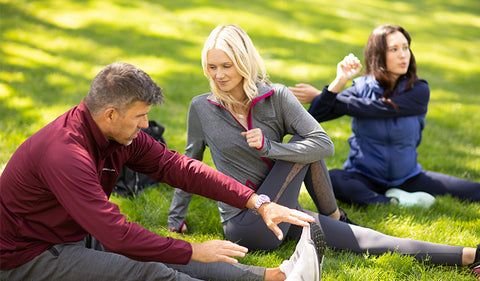Know yourself. Rhythms in concentration and attention

Know yourself. Rhythms in concentration and attention

Ángeles Rol, PhD & Juan Antonio Madrid PhD
Chronobiology Laboratory, University of Murcia. Murcia, Spain
Herbalife Nutrition, a global nutrition company, whose purpose is to make the world healthier and happier, commissioned a special series of articles from us to explain the importance of the biological clock for wellness, how nutrition needs to be carefully timed and how the biological clock is directly linked to a healthy, active lifestyle.
Some of the greatest catastrophes for humankind, with devastating consequences, such as Chernobyl in Ukraine, Exxon Valdez in Alaska, Three Mile Island in the USA, or Bophal in India, occurred in the early morning when mental concentration, reaction time and the ability to make correct decisions ‘in the moment’ are greatly diminished.
We might think that during these moments we are more fatigued, which is true, but this is not the only reason. In fact, when subjects spend 24 hours without sleeping in our chrono-biology laboratory, and perform a reaction time test every two hours (that involves detecting when a traffic light is turned on, or specific mistakes in a series of letters), systematically much lower scores are obtained between 3 to 6am than during the first hours of the night.
However, a secondary drop occurs eight hours after waking up, and in most cases coincides with a post-lunch dip. But curiously, around dawn, when we should be even more tired, results improve again with our circadian body clock being responsible for these changes. Other researchers have found similar rhythms in simple calculation tasks, short memory tests with images or words, or mistakes with driving or flight simulations. In all cases, rhythms showed coincident patterns with minimum values between 3 and 6am but with certain variability depending on human chrono-types.

What process can explain this circadian rhythm? The truth is that we still do not know but melatonin (the ‘darkness hormone’) and core body temperature are two good candidates. Melatonin induces drowsiness and shows maximum values that coincide with the worst cognitive performance and with the central temperature minimum value (again linked with a maximum somnolence) all occurring between 3 and 6am. Whatever the immediate cause of such rhythms, the truth is that in many professions, especially in those requiring important decisions during these concentration dips, such as doctors, professional drivers, air traffic controllers or pilots, the risk for accidents and injuries increases.
How can we deal with this problem? Are there any counter-measures to prevent or mitigate circadian falls in attention processes? Without a doubt, there is something that we can do. If we know when these critical moments can appear, a brief therapeutic nap of about 30 minutes beforehand can help. If this is not possible, stretching or doing some kind of physical activity, even as small as eating a healthy snack, can also help us to surpass these attention dips (for example when driving after lunch). Bright light exposure, which cheats our body and simulates dawn, can also increase arousal or, if this fails, stimulants such as caffeine can improve mental activity. In addition, make sure you are properly hydrated since dehydration could affect cognitive performance in prone populations such as youngsters and elderly people.

But we should not focus only on those moments of minimum capacities, but also take advantage of moments for maximum performance. Knowing in advance when we will have an exam or a job interview, for example, can allow us to train our biological clock to perform at its best at these times of day. A good way to get yourself ready to undertake a particular activity or task is to do something at the same time of the day or night in advance, several times where possible, which will help to prepare your body clock for the actual moment – a few days later we will be surprised at our improved state of alertness. In short, and as in other aspects of our life, we should consider the aphorism ‘know yourself’, although in this case applied to knowing our chrono-biological profile.
References
- Adan A. Cronobiología del rendimiento cognitivo y físico. En “Cronobiologia Básica y Clínica”. Edite@red. Madrid 2006.
- Souman JL, Tinga AM, Te Pas SF, van Ee R, Vlaskamp BNS. Acute alerting effects of light: A systematic literature review. Behav Brain Res. 2018 Jan 30;337:228-239. doi: 10.1016/j.bbr.2017.09.016.
- Caldwell JA, Lynn Caldwell J, Thompson LA, Lieberman HR. Fatigue and its management in the workplace. Neurosci Biobehav Rev. 2018 Nov 1. pii: S0149-7634(18)30522-0. doi: 10.1016/j.neubiorev.2018.10.024.
- Reinberg A, Smolensky MH, Riedel M, Touitou Y, Le Floc’h N, Clarisse R, Marlot M, Berrez S, Pelisse D, Mauvieux B. Chronobiologic perspectives of black time–Accident risk is greatest at night: An opinion paper. Chronobiol Int. 2015;32(7):1005-18. doi: 10.3109/07420528.2015.1053911.
